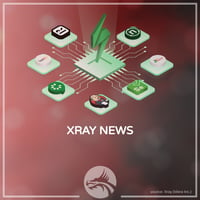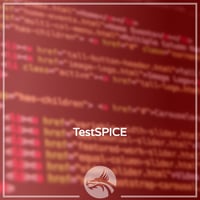
Top 10 Software Testing Trends in 2025
.png?width=365&height=382&name=pngwing.com%20(14).png)
Happy New Year! As we step into 2025, the landscape of software testing continues to evolve, driven by the complexities of modern software development. Organizations are seeking innovative solutions to enhance software quality and remain competitive in a dynamic market. Reflecting on recent projects at NUCIDA in 2024, we’ve identified key trends shaping the future of software testing. These insights will empower IT managers, test managers, quality managers, CEOs, and CIOs to make informed decisions in the year ahead.
1. AI and Machine Learning in Testing
Artificial intelligence (AI) and machine learning (ML) are revolutionizing software testing. These technologies bring unprecedented automation and intelligence, streamlining test creation, identifying complex patterns, and detecting subtle anomalies that may escape human observation. Tools like Testim and Applitools leverage AI to improve efficiency and accuracy, enabling teams to tackle increasingly complex testing challenges.
Use Case Example: In the automotive industry, AI-powered testing ensures the reliability of advanced driver-assistance systems (ADAS). For instance, machine learning algorithms help simulate thousands of road scenarios to validate the safety and performance of autonomous vehicles.
2. Shift-Left Testing.png?width=330&height=233&name=pngwing.com%20(24).png)
The shift-left testing paradigm continues to gain traction, emphasizing the early involvement of quality assurance (QA) teams in the software development lifecycle (SDLC). By identifying and addressing issues early, organizations can reduce costs, minimize risks, and accelerate delivery. Tools like Selenium and Cypress support this proactive approach by integrating seamlessly into CI/CD pipelines.
Use Case Example: In the pharmaceutical sector, shift-left testing helps ensure compliance with regulatory standards by addressing potential issues in clinical trial management systems early in the development process.
.png?width=320&height=289&name=pngwing.com%20(25).png) 3. Test Automation Expansion
3. Test Automation Expansion
With rising demand for faster releases, test automation is becoming essential. Organizations are investing in automation frameworks that enable robust regression testing, ensuring scalability and reliability. Open-source tools like Playwright and enterprise solutions such as Tricentis Tosca empower teams to automate repetitive tasks, allowing human testers to focus on more strategic aspects of quality assurance.
Use Case Example: In logistics, test automation frameworks support the seamless functioning of supply chain management platforms, enabling real-time tracking and optimization of delivery networks.
4. Cloud-Based Testing.png?width=350&height=263&name=pngwing.com%20(23).png)
Cloud-based testing is transforming the way organizations approach scalability and collaboration. By leveraging cloud platforms, teams can simulate diverse environments, test configurations, and user scenarios without the need for extensive infrastructure investments. Solutions like Sauce Labs and BrowserStack enable seamless testing across devices and operating systems, enhancing flexibility and reducing costs.
Use Case Example: Government agencies leverage cloud-based testing to ensure the scalability and security of public-facing portals, such as tax filing systems and citizen service platforms.
.png?width=350&height=219&name=pngwing.com%20(26).png) 5. Performance Engineering
5. Performance Engineering
Performance testing is evolving into performance engineering, a holistic approach that integrates performance considerations throughout the SDLC. This shift ensures that applications meet user expectations for speed, scalability, and reliability. Tools like JMeter and Dynatrace are aiding organizations in conducting continuous performance monitoring and optimization.
Use Case Example: In the automotive sector, performance engineering ensures that in-car infotainment systems deliver seamless user experiences, even under high-demand conditions.
.png?width=150&height=200&name=pngwing.com%20(4).png) 6. Cybersecurity Testing
6. Cybersecurity Testing
As cyber threats grow more sophisticated, cybersecurity testing has become a top priority. Organizations are incorporating security testing into their QA processes to identify vulnerabilities and protect sensitive data. Tools like Burp Suite and OWASP ZAP are integral to ensuring robust application security. Also, DevOps will be improved to DevSecOps to include security testing in shift-left testing practices.
Use Case Example: Pharmaceutical companies integrate cybersecurity testing to safeguard patient data and ensure compliance with data protection regulations in systems managing clinical trials and drug distribution.
7. Continuous Testing.png?width=250&height=267&name=pngwing.com%20(28).png)
Continuous testing aligns closely with DevOps practices like QAOps and DevSecOps, ensuring quality at every stage of the development cycle. By embedding testing into CI/CD workflows, organizations can maintain a consistent delivery cadence without compromising quality. Solutions like Jenkins and GitLab CI/CD pipelines are pivotal in enabling this approach.
Use Case Example: In logistics, continuous testing ensures that warehouse management systems operate efficiently, enabling rapid fulfillment and reducing downtime.
8. Low-Code and No-Code Testing Tools.png?width=300&height=245&name=pngwing.com%20(16).png)
The rise of low-code and no-code platforms is democratizing software testing, making it accessible to non-technical team members. Tools like AskUI, Katalon Studio, and TestProject empower stakeholders across departments to contribute to quality assurance efforts, fostering collaboration and efficiency.
Use Case Example: In the public sector, low-code tools are used to validate the functionality of citizen service applications, reducing the time needed to deploy critical updates.
.png?width=350&height=195&name=pngwing.com%20(18).png) 9. Accessibility Testing
9. Accessibility Testing
Accessibility testing is gaining prominence as organizations prioritize inclusivity. Ensuring that applications are usable by individuals with disabilities not only meets regulatory requirements but also expands the potential user base. Tools like Axe and Wave are helping teams identify and address accessibility barriers.
Use Case Example: Public sector organizations leverage accessibility testing to ensure government websites and applications meet WCAG standards, providing equitable access to all citizens.
10. Data-Driven Testing.png?width=212&height=212&name=pngwing.com%20(29).png)
Data-driven testing enhances test coverage and accuracy by leveraging real-world usage data. By analyzing user behavior and application performance metrics, teams can prioritize test scenarios that matter most. Solutions like TestRail and Zephyr are facilitating this data-centric approach.
Use Case Example: In logistics, data-driven testing optimizes routing algorithms by analyzing delivery patterns, ensuring efficient and timely deliveries.
Conclusion
 The software testing landscape in 2025 is marked by innovation and adaptability. By embracing these trends, organizations can deliver high-quality software that meets user expectations and drives business success. Whether you’re an IT manager, test manager, quality manager, CEO, or CIO, staying ahead of these developments will be critical to navigating the complexities of the digital era.
The software testing landscape in 2025 is marked by innovation and adaptability. By embracing these trends, organizations can deliver high-quality software that meets user expectations and drives business success. Whether you’re an IT manager, test manager, quality manager, CEO, or CIO, staying ahead of these developments will be critical to navigating the complexities of the digital era.
Want to know more? Watch our YouTube video Top 10 Software Testing Trends in 2025 to learn more.
Pictures from pixabay.com






Any questions or hints? Please leave a comment...